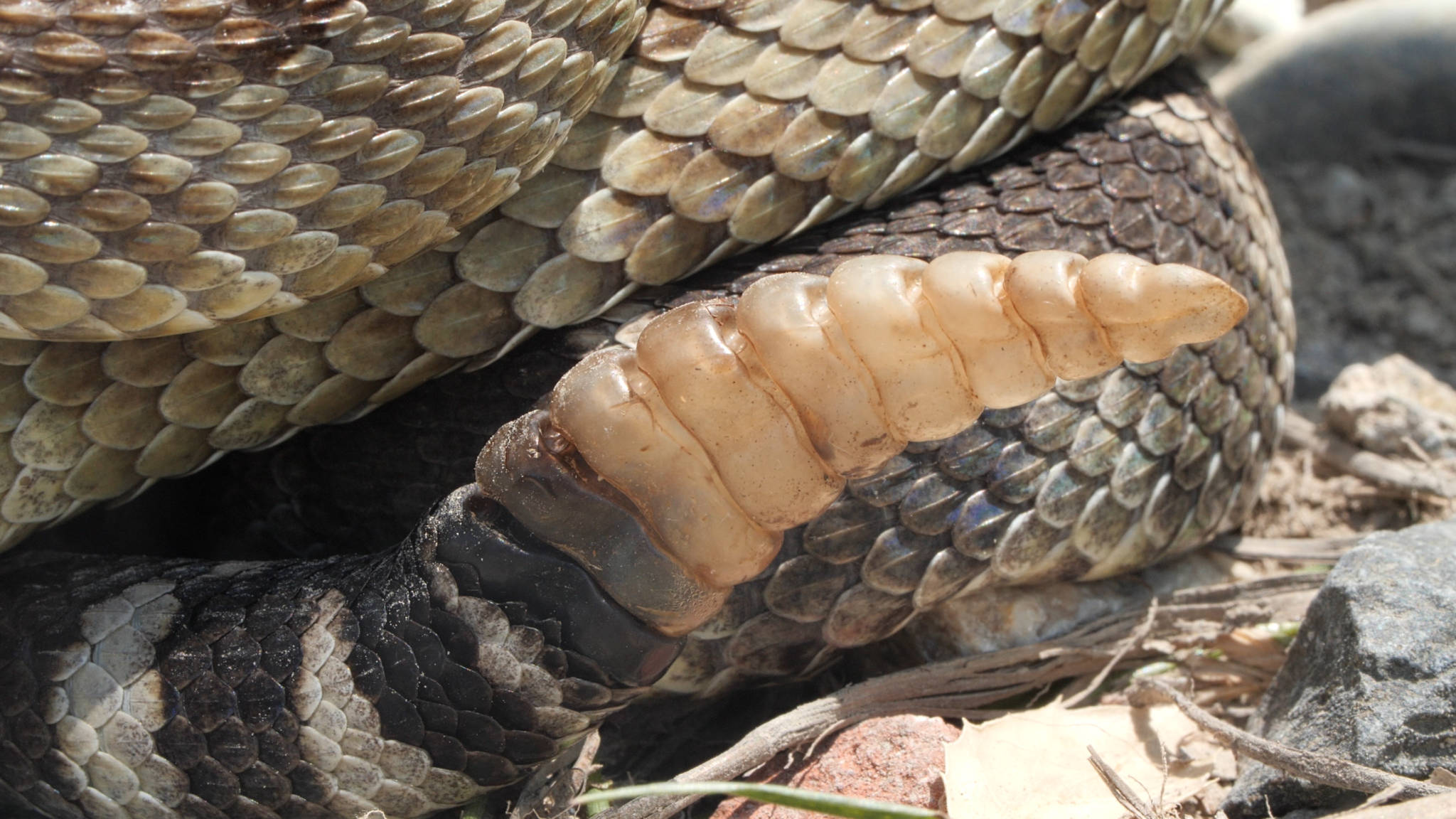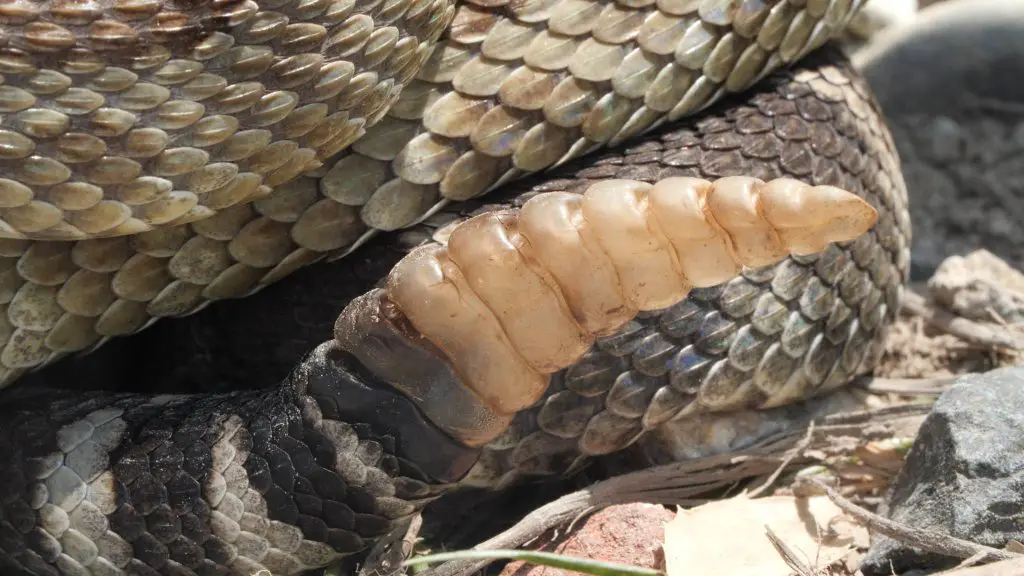Rattlesnakes are notorious for their venomous bite and their signature warning sound – the rattle. But have you ever wondered when and why rattlesnakes rattle? These fascinating creatures have a unique way of communicating, and understanding their behavior can help keep you safe in the great outdoors.
Rattlesnakes use their rattle as a warning sign to potential predators or threats. But not all rattlesnakes rattle at the same time or for the same reasons. From mating season to territory disputes, there are many factors that can trigger a rattlesnake to rattle. Join us as we explore the fascinating world of rattlesnake behavior and learn when you should be on the lookout for their distinctive warning sound.
Rattlesnakes usually rattle when they feel threatened or disturbed. They use their rattle as a warning sign to potential predators or prey to stay away. However, not all rattlesnakes rattle. Baby rattlesnakes may not have developed their rattle yet, and some adult rattlesnakes may have lost their rattle due to injury or age. Therefore, it’s important to always be cautious when hiking or exploring in areas where rattlesnakes may be present.

When Do Rattlesnakes Rattle?
Rattlesnakes are one of the most feared and venomous snakes in the world. Their distinct rattle sound is a warning to stay away and can be heard up to 50 feet away. But have you ever wondered when rattlesnakes rattle? In this article, we will explore the different situations in which rattlesnakes use their rattle.
When Threatened
When a rattlesnake feels threatened, it will use its rattle as a warning to potential predators or threats. The rattle sound is created by the rattlesnake’s tail, which has segments that vibrate against each other. This creates a distinctive sound that can be heard from a distance.
Rattlesnakes usually give a warning rattle before attacking, in order to avoid a confrontation. This is because rattlesnakes do not want to waste their venom on a non-threatening animal. If you hear a rattlesnake’s rattle, it is important to move away slowly and give the snake plenty of space.
During Mating Season
Rattlesnakes also use their rattle during mating season. The males will use their rattle to attract females, and the females will use their rattle to attract males. This is because rattlesnakes are solitary creatures and only come together during mating season.
During this time, males will compete for the attention of a female by rattling louder and longer than other males. If a female is interested, she will respond by rattling back. This behavior is known as “rattlesnake dueling” and can be quite a spectacle to witness.
When Shedding Their Skin
Rattlesnakes also use their rattle when shedding their skin. This is because the skin becomes tight and uncomfortable, and the rattle helps to loosen it. The rattling sound can be heard as the snake rubs against objects to remove its old skin.
During this time, the rattlesnake may be more irritable and defensive, as its vision is temporarily impaired by the shedding process. It is important to give the snake plenty of space and avoid handling it during this time.
When Hunting Prey
Rattlesnakes also use their rattle when hunting prey. This is because the sound can confuse and disorient their prey, making it easier to catch. Rattlesnakes are ambush predators and will wait for their prey to come close before striking.
If you hear a rattling sound while hiking or exploring in the wilderness, it is important to be alert and cautious. Rattlesnakes are excellent hunters and can strike with lightning-fast speed.
Benefits of Rattlesnake Rattles
Rattlesnake rattles have been used in traditional medicine for centuries. They are believed to have healing properties and are used to treat a variety of ailments, including arthritis, rheumatism, and snakebite.
In addition, the rattlesnake’s rattle is an important part of its ecosystem. It helps to keep other animals away, preventing them from disturbing the snake’s habitat. Rattlesnakes are also important predators, helping to control rodent populations in their environment.
Rattlesnake Vs Other Snakes
Rattlesnakes are easily distinguishable from other snakes by their rattle. However, there are other physical characteristics that set them apart as well. Rattlesnakes have triangular heads and vertical pupils, while other snakes have round pupils.
In addition, rattlesnakes are venomous and have a distinctive heat-sensing organ called a pit organ, which allows them to detect prey in the dark. Other snakes are not venomous and do not have this organ.
How to Avoid Rattlesnake Encounters
If you are hiking or exploring in an area known to have rattlesnakes, there are several things you can do to avoid an encounter. First, stay on designated trails and avoid wandering off into tall grass or rocky areas where snakes may be hiding.
Second, make noise while hiking. This will alert snakes to your presence and give them time to move away. Third, wear protective clothing, such as long pants and boots, to reduce the risk of a snakebite.
What to Do If Bitten by a Rattlesnake
If you are bitten by a rattlesnake, it is important to seek medical attention immediately. Do not try to suck out the venom or apply a tourniquet, as this can actually make the situation worse.
Instead, try to stay calm and keep the affected limb immobilized. This will help to slow the spread of the venom through your body. Remember, rattlesnake bites can be deadly, so it is important to take immediate action.
In Conclusion
Rattlesnakes are fascinating and important creatures in our ecosystem. While they can be dangerous if provoked, they are also valuable predators that help to control rodent populations. By understanding when and why rattlesnakes rattle, we can better appreciate and respect these amazing animals. Remember to always be cautious and respectful when encountering rattlesnakes in the wild.
Frequently Asked Questions
Here are some common questions people have about rattlesnakes and their behavior.
How do rattlesnakes make noise?
Rattlesnakes produce their trademark rattle by shaking their tail. The tail has several segments of keratin (the same material that makes up human hair and nails) that knock against each other rapidly, creating a buzzing or rattling sound. This is a warning signal to potential predators or threats.
Not all rattlesnakes have well-developed rattles, however. Young snakes may not have any at all, and some species lose their rattles over time due to wear and tear.
Is rattling the only way rattlesnakes defend themselves?
No, rattling is just one of several ways rattlesnakes protect themselves. If a predator gets too close, the snake may strike with its venomous fangs or coil up and hiss loudly to ward off the threat. Rattlesnakes can also camouflage themselves to blend in with their surroundings and avoid detection.
Despite their dangerous reputation, rattlesnakes are generally not aggressive and will only attack if they feel threatened or cornered.
What time of day are rattlesnakes most active?
Rattlesnakes are ectothermic (cold-blooded) and rely on the sun to regulate their body temperature. As a result, they are most active during the warmer parts of the day, usually in the morning or afternoon. In hot, arid regions, they may also come out at night to hunt when temperatures are more tolerable.
During the hottest parts of the day, rattlesnakes may seek shelter in cool, shaded areas to avoid overheating.
What should I do if I encounter a rattlesnake?
If you see a rattlesnake, it’s best to give it a wide berth and avoid disturbing it. Rattlesnakes will usually try to retreat if given the chance, so don’t try to approach or handle them. If you do end up getting bitten, seek medical attention immediately.
Remember that rattlesnakes play an important role in their ecosystems and should not be killed or harmed unnecessarily.
Do all rattlesnakes have the same venom?
No, different species of rattlesnakes produce different types of venom with varying degrees of potency. Some rattlesnakes have venom that is primarily hemotoxic (affecting blood and tissue), while others have venom that is primarily neurotoxic (affecting the nervous system).
It’s important to seek medical attention as soon as possible if you are bitten by a rattlesnake, as the type and amount of venom injected can have a significant impact on the severity of the bite.
How and Why Does A Rattlesnake Produce Its Rattle?
In conclusion, knowing when rattlesnakes rattle is crucial for staying safe in areas where they are commonly found. The rattle is a warning sign that should not be ignored, as it can mean the difference between life and death. It’s important to remember that rattlesnakes are not aggressive creatures, and will only strike if they feel threatened.
If you encounter a rattlesnake, it’s best to give it plenty of space and avoid disturbing it. Always be aware of your surroundings and keep an eye out for any signs of their presence, such as shed skin or fresh tracks.
In the end, it’s important to respect these fascinating creatures and appreciate their role in the ecosystem. By understanding when rattlesnakes rattle and how to safely coexist with them, we can better appreciate the natural world around us. So, stay alert, stay safe, and enjoy all the beauty that nature has to offer.


